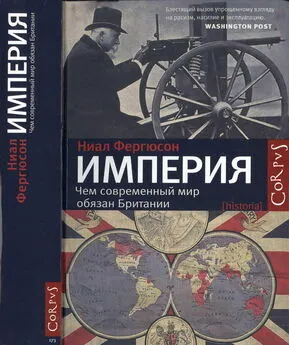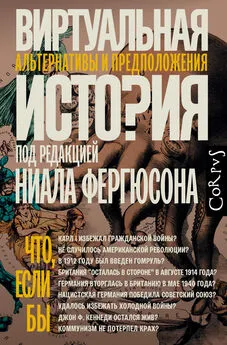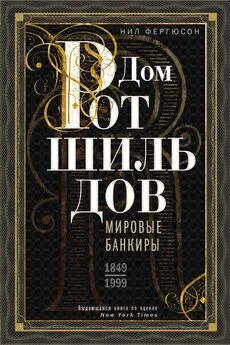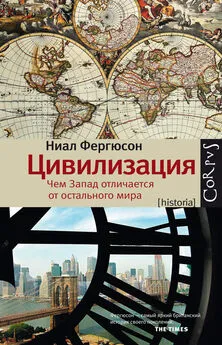Ниал Фергюсон - Площадь и башня [Cети и власть от масонов до Facebook]
- Название:Площадь и башня [Cети и власть от масонов до Facebook]
- Автор:
- Жанр:
- Издательство:Литагент Corpus
- Год:2017
- ISBN:978-5-17-109384-6
- Рейтинг:
- Избранное:Добавить в избранное
-
Отзывы:
-
Ваша оценка:
Ниал Фергюсон - Площадь и башня [Cети и власть от масонов до Facebook] краткое содержание
Площадь и башня [Cети и власть от масонов до Facebook] - читать онлайн бесплатно ознакомительный отрывок
Интервал:
Закладка:
Fukuyama, Francis. Political Order and Political Decay: From the Industrial Revolution to the Globalisation of Democracy . London: Profile Books, 2014.
Goertzel, Ted. ‘Belief in Conspiracy Theories’, Political Psychology , 15, 4. December 1994, 731–742.
Goldberg, Amir, Sameer B. Srivastava, V. Govind Manian, William Monroe and Christopher Potts. ‘Fitting In or Standing Out? The Tradeoffs of Structural and Cultural Embeddedness’, American Sociological Review , 81, 6 (2016): 1190–1222.
Gorky, Maxim, transl. Ronald Wilks, My Universities . London: Penguin Books, 1979 [1922].
Горький, Максим. Детство. В людях. Мои университеты . М., 2018.
Granovetter, Mark. ‘The Strength of Weak Ties’, American Journal of Sociology , 78, 6 (May 1973), 1360–1380.
Granovetter, Mark. ‘The Strength of Weak Ties: A Network Theory Revisited’, Sociological Theory , 1 (1983), 201–233.
Greif, Avner. ‘Contract Enforceability and Economic Institutions in Early Trade: The Maghribi Traders’ Coalition’, American Economic Review , 83, 3 (June 1993), 525–548.
Greif, Avner. ‘Reputation and Coalitions in Medieval Trade: Evidence on the Maghribi Traders’, Journal of Economic History , 49, 4 (December 1989), 857–882.
Grewal, David Singh. Network Power: The Social Dynamics of Globalization . New Haven: Yale University Press, 2008.
Harari, Yuval Noah. Homo Deus: A Brief History of Tomorrow . New York: HarperCollins, 2017.
Харари, Юваль Ной. Homo Deus: Краткая история будущего / Пер. А. Андрееева. М., 2018.
Harari, Yuval Noah. Sapiens: A Brief History of Humankind . New York: HarperCollins, 2015.
Харари, Юваль Ной. Sapiens. Краткая история человечества / Пер. Л. Сумм. М., 2019.
Harrison, Richard J. and Glenn R. Carroll. ‘The Dynamics of Cultural Influence Networks’, Computational & Mathematical Organization Theory , 8 (2002), 5–30.
Hataley, K. M. ‘In Search of the Illuminati: A Light Amidst Darkness’, Journal of the Western Mystery Tradition , 23, 3 (2012).
Henrich, Joseph. The Secret of Our Success: How Culture is Driving Human Evolution, Domesticating Our Species, and Making Us Smarter . Princeton: Princeton University Press, 2016.
Heylighen, Francis. ‘From Human Computation to the Global Brain: The Self-Organization of Distributed Intelligence’, in Pietro Michelucci (ed.), Handbook of Human Computation . New York: Springer, 2013, 897–909.
Heylighen, Francis. ‘The Global Superorganism: An Evolutionary-Cybernetic Model of the Emerging Network Society’, Social Evolution and History , 1, 6 (2007), 57–117.
Hofman, Amos. ‘Opinion, Illusion, and the Illusion of Opinion: Barruel’s Theory of Conspiracy’, Eighteenth - Century Studies , 27, 1 (Autumn, 1993), 27–60.
Hofstadter, Richard. The Paranoid Style in American Politics and Other Essays . New York: Alfred A. Knopf, 1965.
Israel, Jonathan. Democratic Enlightenment: Philosophy, Revolution, and Human Rights , 1750–1790. Oxford: Oxford University Press, 2011.
Ito, Joi and Jeff Howe. Whiplash: How to Survive Our Faster Future . New York: Grand Central Publishing, 2016.
Jackson, Matthew O. ‘Networks in the Understanding of Economic Behaviors’, Journal of Economic Perspectives , 28, 4 (2014), 3–22.
Jackson, Matthew O. Social and Economic Networks . Princeton: Princeton University Press, 2008.
Jackson, Matthew O. and Brian W. Rogers. ‘Meeting Strangers and Friends of Friends: How Random are Social Networks?’, American Economic Review , 97, 3 (2007), 890–915.
Jackson, Matthew O., Tomas Rodriguez-Barraquer and Xu Tan. ‘Social Capital and Social Quilts: Network Patterns of Favor Exchange’, American Economic Review 102, 5 (2012), 1857–1897.
Jackson, Matthew O., Brian W. Rogers and Yves Zenou. ‘Connections in the Modern World: Network-Based Insights’, 6 March 2015.
Jackson, Matthew O. and Brian W. Rogers. ‘Meeting Strangers and Friends of Friends: How Random are Social Networks?’, American Economic Review , 97, 3 (2007), 890–915.
Kadushin, Charles. Understanding Social Networks: Theories, Concepts, and Findings . New York: Oxford University Press, 2012.
Katz, Elihu and Paul Felix Lazarsfeld. Personal Influence: The Part Played by People in the Flow of Mass Communications . New York: Free Press, 1955.
Khanna, Parag. Connectography: Mapping the Global Network Revolution . London: Weidenfeld & Nicolson, 2016.
Kleinbaum, Adam M., Toby E. Stuart and Michael L. Tushman. ‘Discretion Within Constraint: Homophily and Structure in a Formal Organization’, Organization Science , 24, 5 (2013), 1316–1336.
Knight, Peter. ‘Outrageous Conspiracy Theories: Popular and Official Responses to 9/11 in Germany and the United States’, New German Critique, 103: conference on Dark Powers: Conspiracies and Conspiracy Theory in History and Literature (Winter 2008), 165–193.
Krueger, Rita. Czech, German, and Noble: Status and National Identity in Habsburg Bohemia . Oxford: Oxford University Press, 2009.
Landes, Richard. ‘The Jews as Contested Ground in Postmodern Conspiracy Theory’, Jewish Political Studies Review , 19, 3/4 (Fall 2007), 9–34.
Leinesch, Michael. ‘The Illusion of the Illuminati: The Counterconspiratorial Origins of Post- Revolutionary Conservatism’, in W. M. Verhoeven (ed.), Revolutionary Histories: Transatlantic Cultural Nationalism , 1775–1815. New York: Palgrave Macmillan, 2002, 152–165.
Leskovec, Jure, Daniel Huttenlocher and Jon Kleinberg. ‘Signed Networks in Social Media’, CHI 2010 (10–15 April 2010).
Liu, Ka-Yuet, Marissa King and Peter S. Bearman. ‘Social Influence and the Autism Epidemic’, American Journal of Sociology , 115, 5 (2012), 1387–1434.
Livers, Keith. ‘The Tower or the Labyrinth: Conspiracy, Occult, and Empire-Nostalgia in the Work of Viktor Pelevin and Aleksandr Prokhanov’, Russian Review , 69, 3 (July 2010), 477–503.
Loreto, Vittorio, Vito D. P. Servedio, Steven H. Strogatz and Francesca Tria. ‘Dynamics and Expanding Spaces: Modeling the Emergence of Novelties’, in Mirko Degli Esposti, Eduardo G. Altmann and François Pachet (eds.), Creativity and Universality in Language (Berlin: Springer International Publishing, 2016), 59–83.
McArthur, Benjamin. ‘“They’re Out to Get Us”: Another Look at Our Paranoid Tradition’, History Teacher , 29, 1 (November 1995), 37–50.
McNeill, J. R. and William McNeill. The Human Web: A Bird ’ s - Eye View of Human History . New York and London: W. W. Norton, 2003.
McPherson, Miller, Lynn Smith-Lovin, and James M. Cook. ‘Birds of a Feather: Homophily in Social Networks’, Annual Review of Sociology , 27 (2001), 415–444.
Markner, Reinhard, Monika Neugebauer-WÖlk and Hermann SchÜttler (eds.). Die Korrespondenz des Illuminatenordens , vol. I: 1776–1781. Tübingen: Max Niemeyer Verlag, 2005.
Massey, Douglas S. ‘A Brief History of Human Society: The Origin and Role of Emotion in Social Life’, American Sociological Review , 67 (February 2002), 1–29.
Melanson, Terry. Perfectibilists: The 18 th Century Bavarian Order of the Illuminati . Walterville, OR: Trine Day, 2011.
Meumann, Markus and Olaf Simons. ‘Illuminati’, in Encyclopedia of the Bible and Its Reception , vol. 12: Ho Tsun Shen – Insult . Berlin and Boston, MA: De Gruyter, 2016, columns 880–883.
Milgram, Stanley. ‘Small-World Problem’, Psychology Today , 1, 1 (May 1967), 61–67.
Moody, James. ‘Race, School Integration, and Friendship Segregation in America’, American Journal of Sociology , 107, 3 (November 2001), 679–716.
Moreno, J. L. Who Shall Survive? Foundations of Sociometry, Group Psychotherapy and Sociodrama . Beacon, NY: Beacon House Inc., 1953.
Moretti, Franco. ‘Network Theory, Plot Analysis’, Literary Lab , Pamphlet 2, 1 May 2011.
Nahon, Karine and Jeff Hemsley. Going Viral . Cambridge: Polity, 2013.
Oliver, Eric J. and Thomas J. Wood. ‘Conspiracy Theories and the Paranoid Style (s) of Mass Opinion’, American Journal of Political Science , 58, 4 (October 2014), 952–966.
Padgett, John F. and Paul D. McLean. ‘Organizational Invention and Elite Transformation: The Birth of Partnership Systems in Renaissance Florence’, American Journal of Sociology , 111, 5 (March 2006), 1463–1568.
Padgett, John F. and Walter W. Powell. The Emergence of Organizations and Markets . Princeton: Princeton University Press, 2012.
Payson, Seth, Proofs of the Real Existence, and Dangerous Tendency, of Illuminism: Containing an Abstract of the Most Interesting Parts of what Dr. Robison and the Abbe Barruel Have Published on this Subject, with Collateral Proofs and General Observations . Charlestown: Samuel Etheridge, 1802.
Pinker, Susan. The Village Effect: Why Face to - Face Contact Matters . London: Atlantic Books, 2015.
Ramo, Joshua Cooper. The Seventh Sense: Power, Fortune, and Survival in the Age of Networks . New York: Little, Brown, 2016.
Рамо, Джошуа Купер. Седьмое чувство. Под знаком предсказуемости / Пер. А. Рудницкой, Э. Ибрагимова. М., 2017.
Roberts, J. M. The Mythology of the Secret Societies. London: Secker & Warburg, 1971.
Rogers, Everett M. Diffusion of Innovations , 5th edn. New York and London: Free Press, 2003.
Rosen, Sherwin. ‘The Economics of Superstars’, American Economic Review , 71, 5 (December 1981), 845–858.
Sampson, Tony D. Virality: Contagion Theory in the Age of Networks . Minneapolis and London: University of Minnesota Press, 2012.
Schmidt, Eric and Jared Cohen. The New Digital Age: Transforming Nations, Businesses, and Our Lives . New York: Knopf Doubleday, 2013.
SchÜttler, Hermann. Die Mitglieder des Illuminatenordens , 1776–1787/93. Munich: ars una, 1991.
SchÜttler, Hermann. ‘Zwei freimaurerische Geheimgesellschaften des 18. Jahrhunderts im Vergleich: Strikte Observanz und Illuminatenorden’, in Erich Donnert (ed.), Europa in der Frühen Neuzeit: Festschrift für Günter Mühlpfordt , vol. IV: Deutsche Aufkl-rung . Weimar, Cologne and Vienna: Böhlau, 1997, 521–544.
Simons, Olaf and Markus Meumann. ‘“Mein Amt ist geheime gewissens Correspondenz und unsere Brüder zu führen”. Bode als “Unbekannter Oberer” des Illuminatenordens’, in Cord-Friedrich Berghahn, Gerd Biegel and Till Kinzel (eds.), Johann Joachim Christoph Bode – Studien zu Leben und Werk [ Germanisch - Romanische Monatsschrift, Beihefte ]. Heidelberg: Winter, 2017.
Slaughter, Anne-Marie. The Chessboard and the Web: Strategies of Connection in a Networked World . Henry L. Stimson Lectures. New Haven: Yale University Press, 2017.
Smith-Doerr, Laurel and Walter W. Powell. ‘Networks and Economic Life’, in Neil Smelser and Richard Swedberg (eds.), The Handbook of Economic Sociology . Princeton: Princeton University Press, 2010, 379–402.
Читать дальшеИнтервал:
Закладка:
![Обложка книги Ниал Фергюсон - Площадь и башня [Cети и власть от масонов до Facebook]](/books/1070896/nial-fergyuson-plochad-i-bashnya-ceti-i-vlast-ot-ma.webp)









